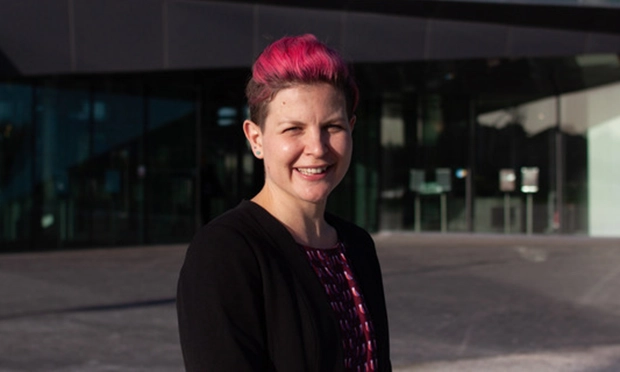Dalston councillor slams ‘discriminatory’ use of facial recognition

Cllr Zoë Garbett AM. Photograph: Green Party
Hackney Greens’ co-leader has hit out at the Metropolitan Police’s ‘disproportionate surveillance’ – as data shows facial recognition technology has been deployed mostly in boroughs with a higher-than-average Black population.
City Hall’s Green group last week circulated figures that showed live facial recognition (LFR) was used 180 times last year, with over half of these instances in places where the Black population is larger than the city’s average.
The areas included Croydon’s Thornton Heath, where 40 per cent of residents are Black, Haringey’s Northumberland Park (36 per cent), and Lewisham’s Deptford High Street (34 per cent).
Dalston councillor Zoë Garbett, who also represents London at City Hall, said the rollout of face scanners posed a “new threat” by “reinforcing the troubling assumption that certain communities are more likely to be criminals”.
“Facial recognition subjects everyone to constant surveillance, which goes against the democratic principle that you shouldn’t be monitored unless there’s a suspicion of wrongdoing,” she said.
“How is it fair that you’re more likely to be surveilled simply because you do your shopping on Deptford High Street?
“The Met claims live facial recognition has been a success in London, but how is treating millions of Londoners as suspects be considered as a success?”
The Hackney Greens’ co-leader said the use of technology had still only seen “low” arrest figures, while Black Londoners were disproportionately targeted.
According to census data from 2021, nearly one in four Hackney residents identifies as ‘Black’ or ‘Black British’.
Cllr Garbett’s comments follow local debate over LFR early last year, when the council – in a rare show of cross-party unity – passed a Green group motion opposing its use in the borough.
The Greens had urged the Labour-run administration to resist the police’s deployment of the technology “until the council is satisfied that the potential benefits to crime reduction will not lead to a further erosion of trust and confidence in policing in Hackney”.
At the time, a council spokesperson said LFR was not in use in the borough, and that following the motion’s passing, the Met had agreed to consult with councillors of all parties by demonstrating its deployment in action on Mare Street.
Since then, the technology has been employed by police six times in Hackney, the majority of which were in the police-designated “crime hotspots” of Mare Street and Kingsland High Street.
Following a positive identity match during these deployments, 26 arrests were made.
In 25 instances, no action was taken.
On Friday, a Hackney Council spokesperson told the Citizen it was a police matter, but reiterated that the Met had engaged with the council and all councillors prior to the use of LFR.
“As a council we don’t have the mandate to prevent the police from using such technology,” the spokesperson said.
But Cllr Garbett said the council appeared to be shirking accountability.
“Even if they don’t have final say, they could be raising concerns and pushing back to ensure there is no bias or harm being caused to Hackney residents,” she told the Citizen.
A Metropolitan Police spokesperson said it was “committed to making London safer”, using data and technology to find offenders who posed the “greatest risk to our communities”.
They added that LFR helped police make more than 500 arrests last year, including for rape and domestic abuse offences.
“Each deployment is intelligence-led and resources are targeted based on an assessment of threat, harm and risk,” the spokesperson added.
“Our focus is on ensuring the safety of London’s streets while maintaining open, honest dialogue about the use of LFR and appropriate safeguards around the technology.”
Update: this article was amended at 8.52am on 3 April to clarify that Zoë Garbett represents London at City Hall, rather than Hackney as originally stated.
